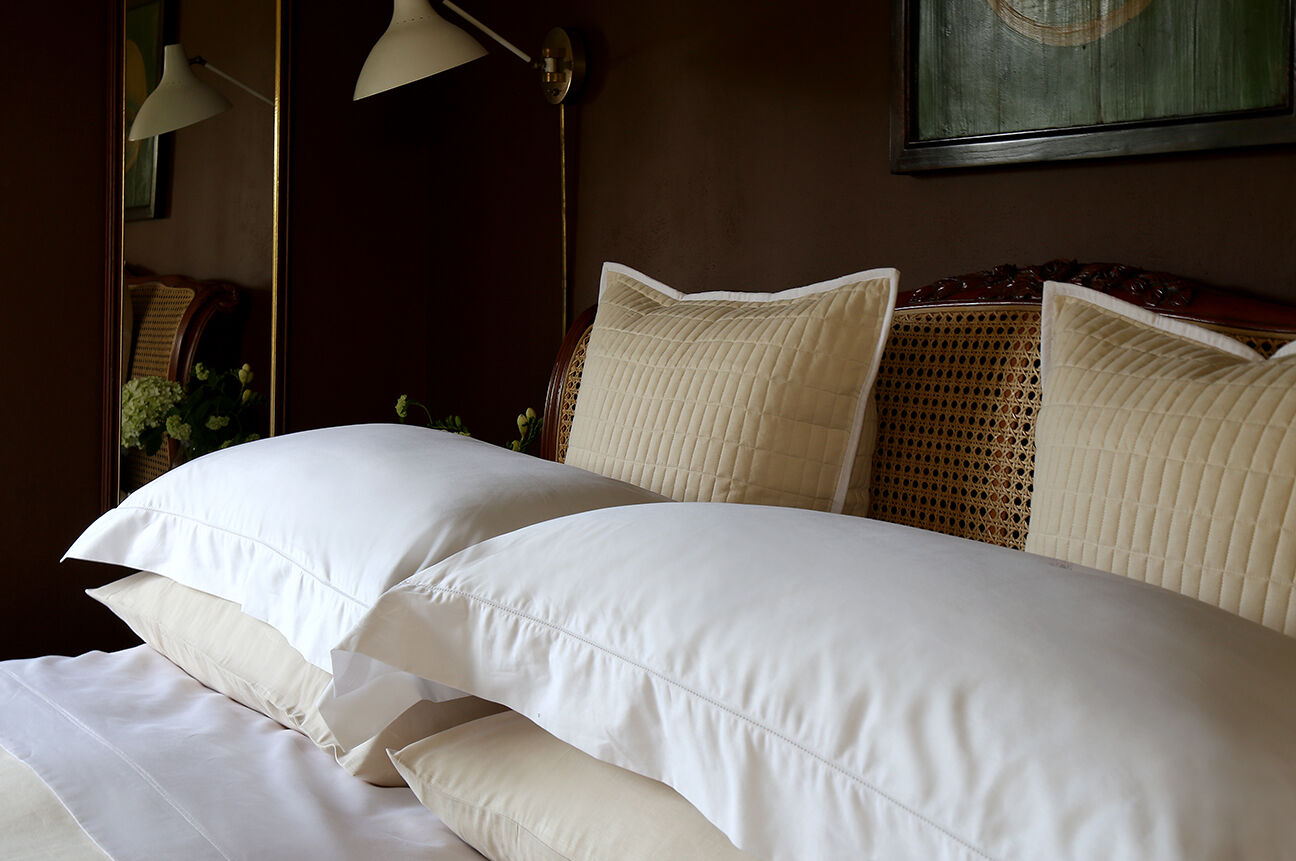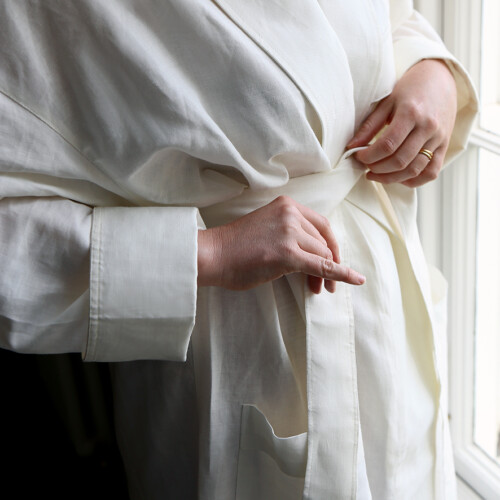
Monthly Inspiration
Join our family to be the first to receive our latest stories and inspiration.
WORLDWIDE SHIPPING Complimentary within UK on Purchases over £250

Bathrobes or gowns, whatever you like to call them, this garments luxurious tale began in the western world somewhere around the early 1700s. The garment itself was derived from a banyan, beloved to be from Armenia or the Far East.
It would be hundreds of years before the Suffragettes burnt their bras, so men were privy to this comfort long before women. A robe was typically made of a rich brocade or silk and was used during morning ablutions or in the evening when relaxing, men’s daywear was rather restricting at the time.
By the mid 1800s ladies were fortunate to be afforded a little respite and began to wear dressing gowns in their private quarters, as a break from their tightly laced corsets. They wore richly adorned brocade and silk gowns with undergarments for breakfast, sewing and relaxing privately.
An interesting shift happened with the industrial revolution taking hold, the fabrics used were becoming less ostentatious and more plain cotton robes were introduced. The upper class were working hard to change their image of being idly privileged.
This then made way for early 20th century bathing robes. New found freedom between the world wars, meant bathing in the sea was more commonplace and yet covering one’s body was still socially required. Until the 1950s bathing robes were considered the only appropriate item to wear on the beach
At Reed, our beautifully crafted linen union gowns are made with generosity and care in mind. Periods of rest and self-reflection are vital in our fast paced lives. Encapsulate that feeling of a relaxing at a luxury hotel with our hand-sewn linen and cotton blend gowns.
It would be hundreds of years before the Suffragettes burnt their bras, so men were privy to this comfort long before women.
Beautifully cut and finished with turn-back cuffs and a breast pocket, a Reed gown is a self care investment.
Why we combine linen & cotton |
Linen offers temperature-regulating properties and comfort. Research has shown that wearing linen blends helps us to perspire less. Linen is quick to dry and lightweight, making a linen blend gown a great choice for travelling.
Thanks to linens signature charming crumples there’s no need to worry about ironing it. Our gowns are unfussy and offer an air of casual elegance and breezy simplicity. Classic and not swayed by fickle fashion trends, a Reed gown makes a timeless statement.
Pure cotton gowns can become threadbare and lose their shape after repeated washing, unlike a linen blend, which gets better with every wash. Linen is also naturally anti-microbial, meaning your gown will stay fresher and looking great for longer.
Derived from the flax plant, linen uses far less water than the consumption rate to produce the same amount of cotton. This makes it a more sustainable choice. Fewer pesticides are used to grow flax than in cotton growing, and linen fibres can be processed without the use of chemicals.
Cotton plants require huge amounts of land, whereas flax will happily grow on poor soil. At Reed we are committed to sourcing and supporting organic cotton growers , but due to the reduction in crop yields resulting from the lack of chemicals allowed for organic cotton production, it requires yet more land. It’s a tricky environmental issue to weigh up as bed linen producers. Linen is less resource-hungry, and once it has finished its useful life, linen fabric will simply biodegrade with no harmful waste or by-products.
Bathrobes or gowns, whatever you like to call them, this garments luxurious tale began in the western world somewhere around the early 1700s.
Cotton is a natural fibre that comes from the cotton plant. Cotton fibres are fluffier than linen fibres and cotton fabrics are known for their versatility, softness, and comfort.
Though linen is the stronger fibre naturally, cotton fabrics, made from several cotton fibres spun and woven together, are also resilient. As cotton fibres are significantly finer than linen fibres, they can be woven together to create an incredibly soft and silky feel.
Cotton is also extremely breathable and absorbent, absorbing up to 25% of its weight in moisture. It however, does not share linen’s moisture wicking properties and can take longer to dry. Cotton blends are easy to care for and ideal for everyday use that still has a luxurious feel.
A little self-care goes a long way and has been shown to reduce anxiety, improve productivity, boost our mood, power up our immune systems, and lower our risk for health concerns associated with chronic stress, like heart disease and diabetes. It won’t happen overnight, but self-care is like strengthening a muscle, you have to work at it daily to see improvement.
We have found that scheduling time for self care and making sure we have what we need like detox salts for a long bath, a beautiful gown to wrap ourselves in and fresh loose leaf tea to brew goes a long way towards manifesting this practice. Refuelling our mental and physical health is a priority.
Whatever this looks like for you? Carve out “me” time and spoil yourself with a little Reed luxury.
Happy languishing,
Karen Reed

Join our family to be the first to receive our latest stories and inspiration.

